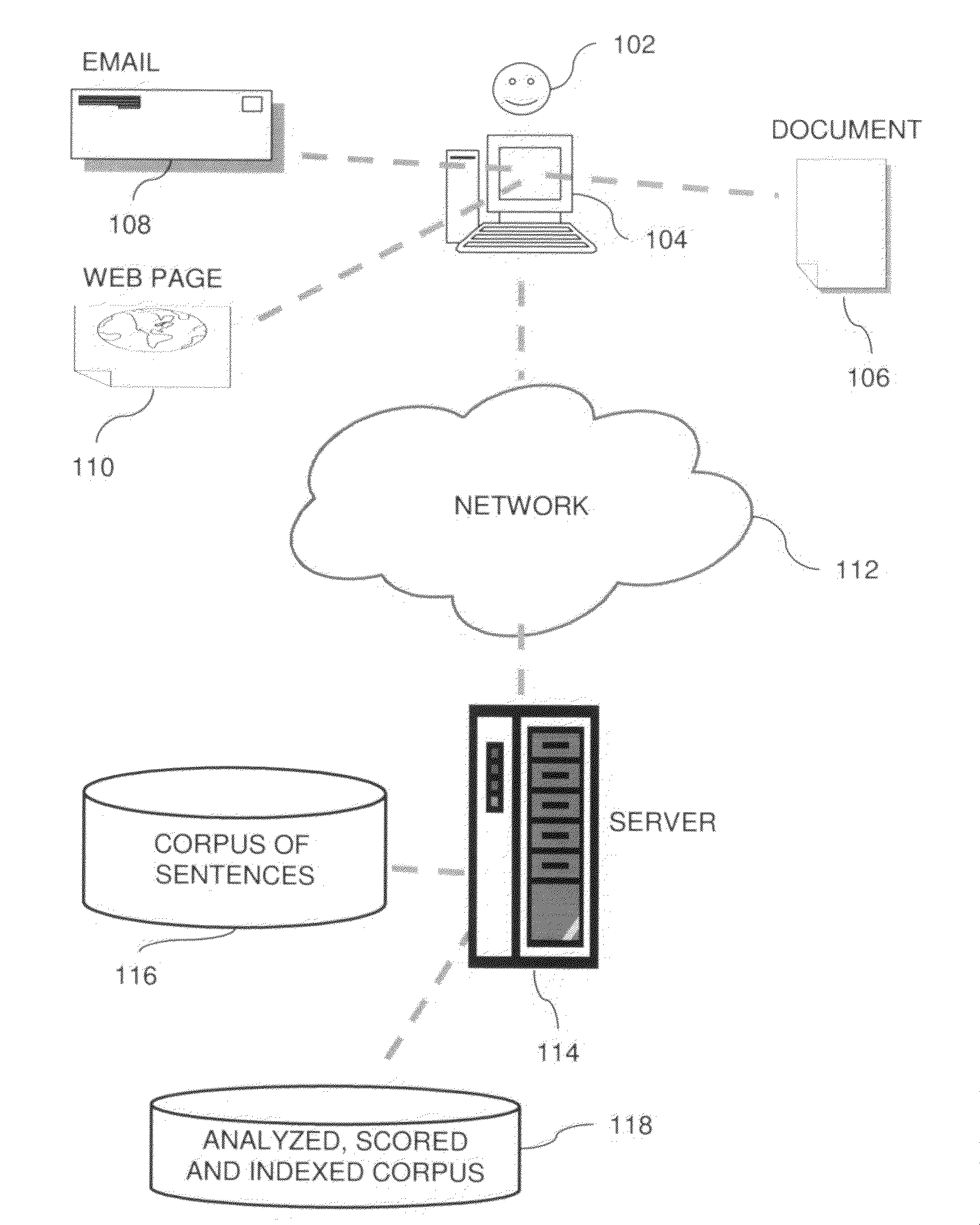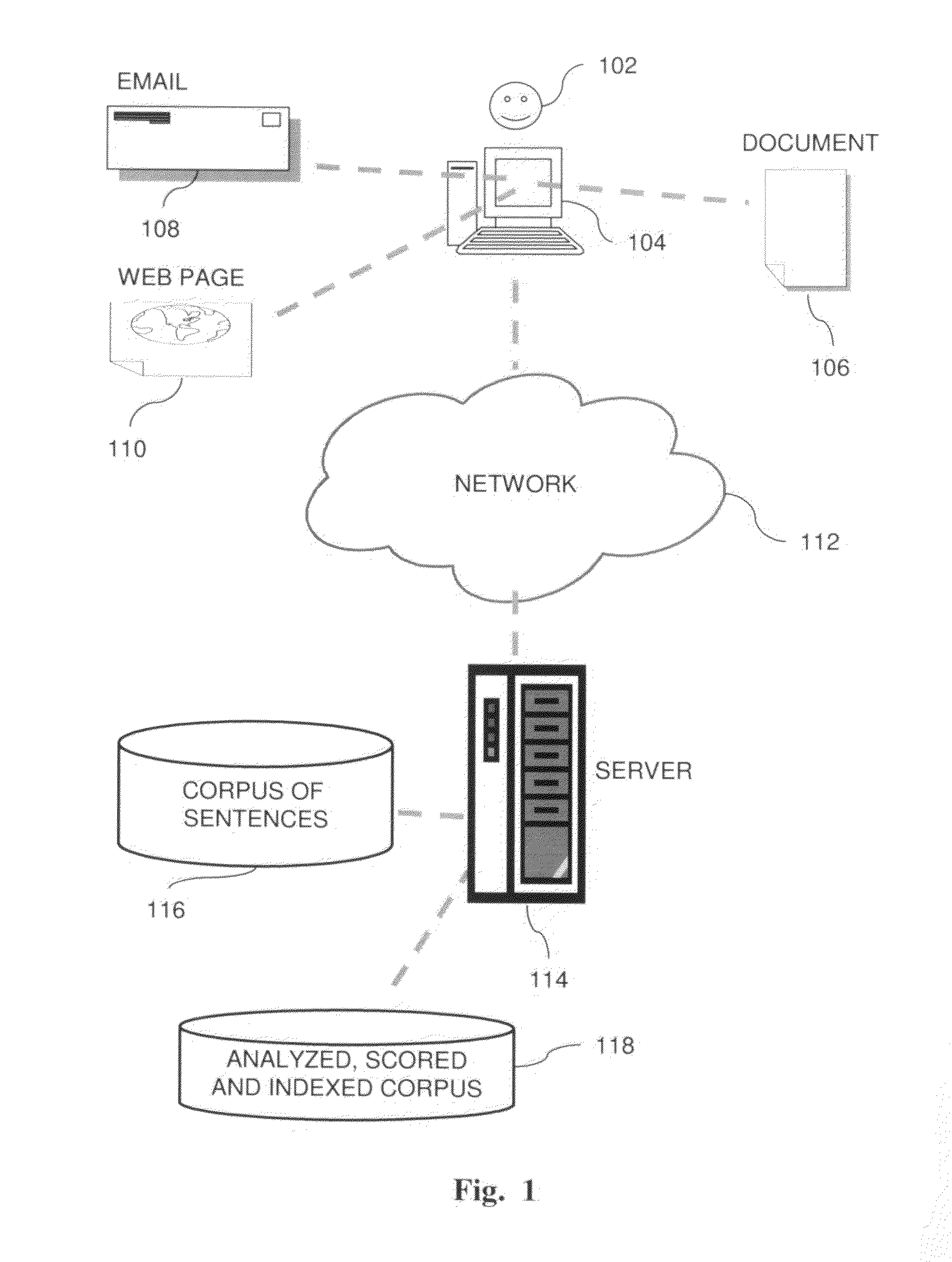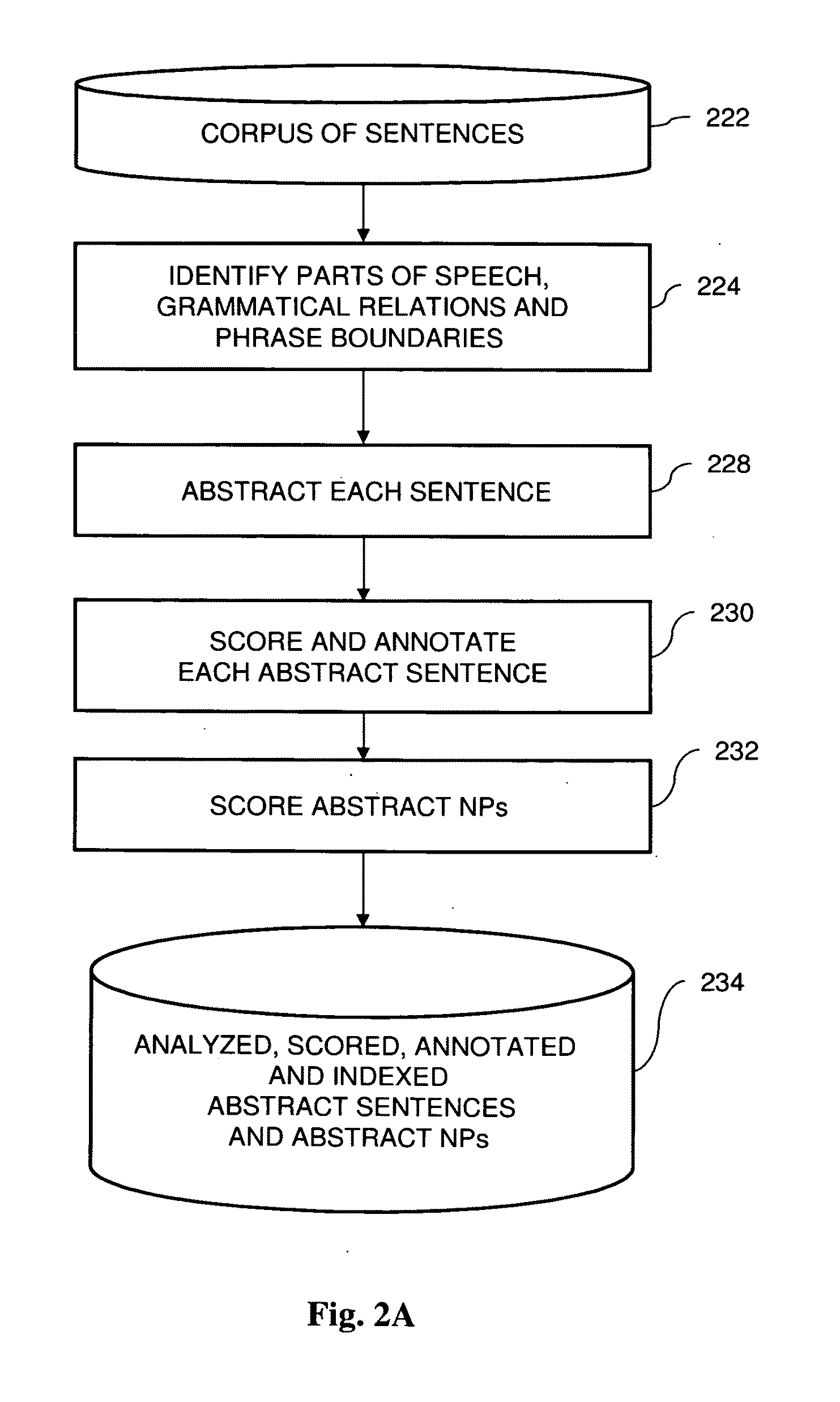Method for text improvement via linguistic abstractions
a text improvement and abstraction technology, applied in the field of text improvement methods, grammar checking and correction, can solve the problems of virtually impossible matching of a given sentence, let alone a larger piece of text, to a corpus of sentences, in order to identify errors and find corrections or improvements, and achieve the effect of reducing the number of sentences, improving the quality of said text, and simple and shorter sentences
- Summary
- Abstract
- Description
- Claims
- Application Information
AI Technical Summary
Benefits of technology
Problems solved by technology
Method used
Image
Examples
example 1
Linguistic Processing of Text
[0104]Input text: “it's almost time for lunch.”
[0105]Tokenization output:
[0106]Morphological analysis, listing the possible POS of each token:[0107]it: pronoun; expletive[0108]'s: verb; possessive[0109]time: noun; verb[0110]almost: adverb[0111]for: preposition[0112]lunch: noun; verb
[0113]POS tagging ranks the analyses; in the example above, the first POS is the correct one in the context.
[0114]Phrase boundaries:
[0115][[it]['s almost][time[for[lunch]]]
[0116]Phrase boundaries with phrase types:
[0117][[NP it][VP 's almost][NP time[PP for[NP lunch]]][0118]Additional prior art syntactic processing can identify grammatical relations such as SUBJECT and OBJECT, if such grammatical relations should be required.
example 2
NP Abstraction
[0119]Given the sentence “it's almost time for lunch”, a possible abstraction consists of replacing all noun phrases by wildcards. This results in:
[0120][NP *][VP's almost][NP *[PP for[NP*]]]
[0121]Another possibility is to abstract only the last NP, resulting in:
[0122][[NP it][VP's almost][NP time[PP for[NP*]]]
[0123]Observe also that the completely different sentence “the ones in the corner are packages for shipping” results in a very similar abstract structure:
[0124][[NP the ones[PP in[NP the corner]]][VP are][NP packages[PP for[NP shipping]]]
[0125][[NP *][VP are][NP * [PP for[NP *]]]
example 3
Text Improvement
[0126]Assume the following input: “its almost time to dinner”. Note the wrong “its” where “it's” is required, and the incorrect use of the preposition. Once abstracted, it may yield the following structure:
[0127][NP *][VP][NP *[PP for[NP *]]]
[0128]Matching against a corpus of processed abstract sentences may reveal that the closest match is a similar structure, where the VP is either “is” or “are”, and where the first NP is a pronoun (e.g., “it”). Also, in such structures the preposition “for” may be much more frequent than “to”. Hence, the system may propose the following correction: “it is time for dinner”.
PUM
 Login to View More
Login to View More Abstract
Description
Claims
Application Information
 Login to View More
Login to View More - R&D
- Intellectual Property
- Life Sciences
- Materials
- Tech Scout
- Unparalleled Data Quality
- Higher Quality Content
- 60% Fewer Hallucinations
Browse by: Latest US Patents, China's latest patents, Technical Efficacy Thesaurus, Application Domain, Technology Topic, Popular Technical Reports.
© 2025 PatSnap. All rights reserved.Legal|Privacy policy|Modern Slavery Act Transparency Statement|Sitemap|About US| Contact US: help@patsnap.com



